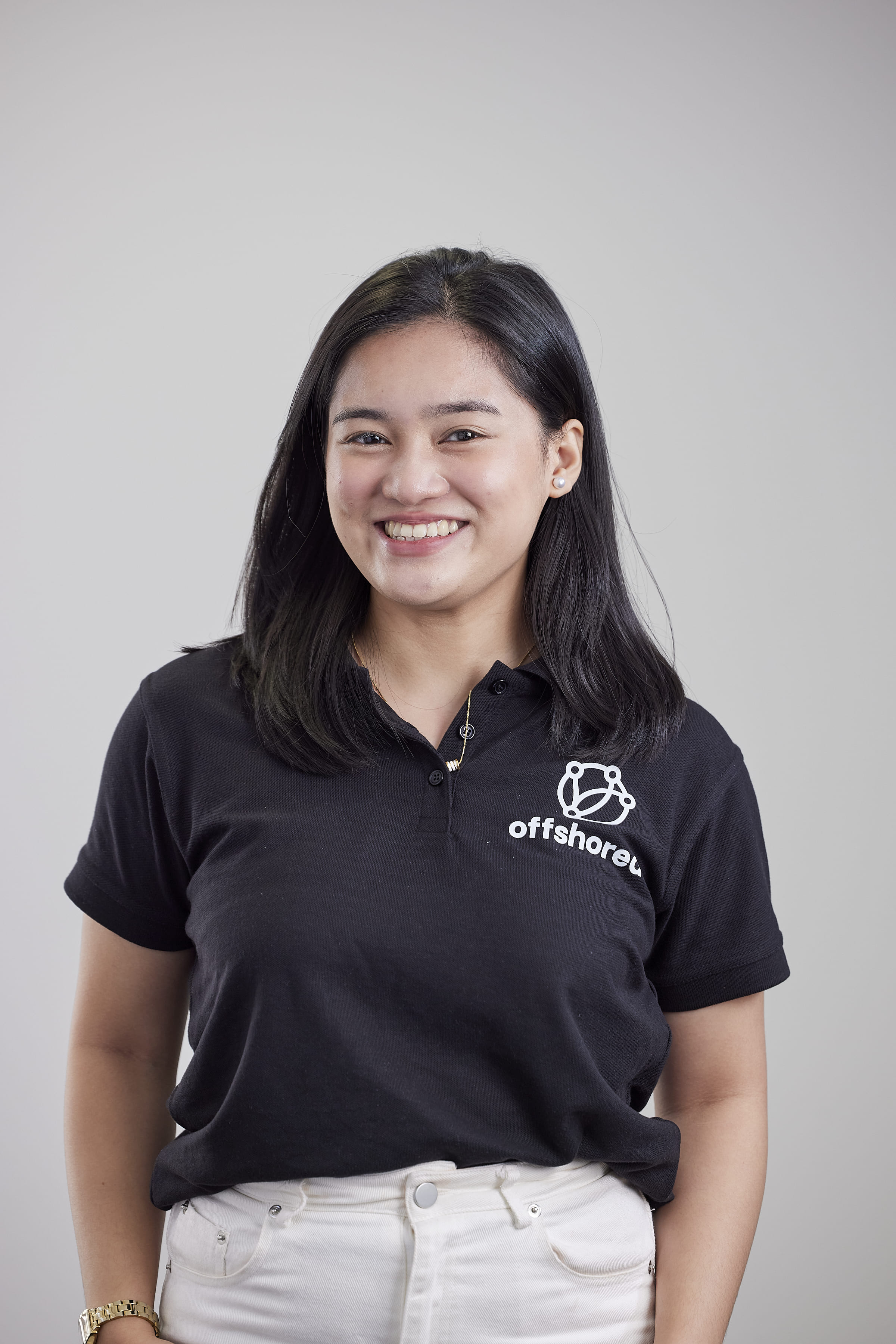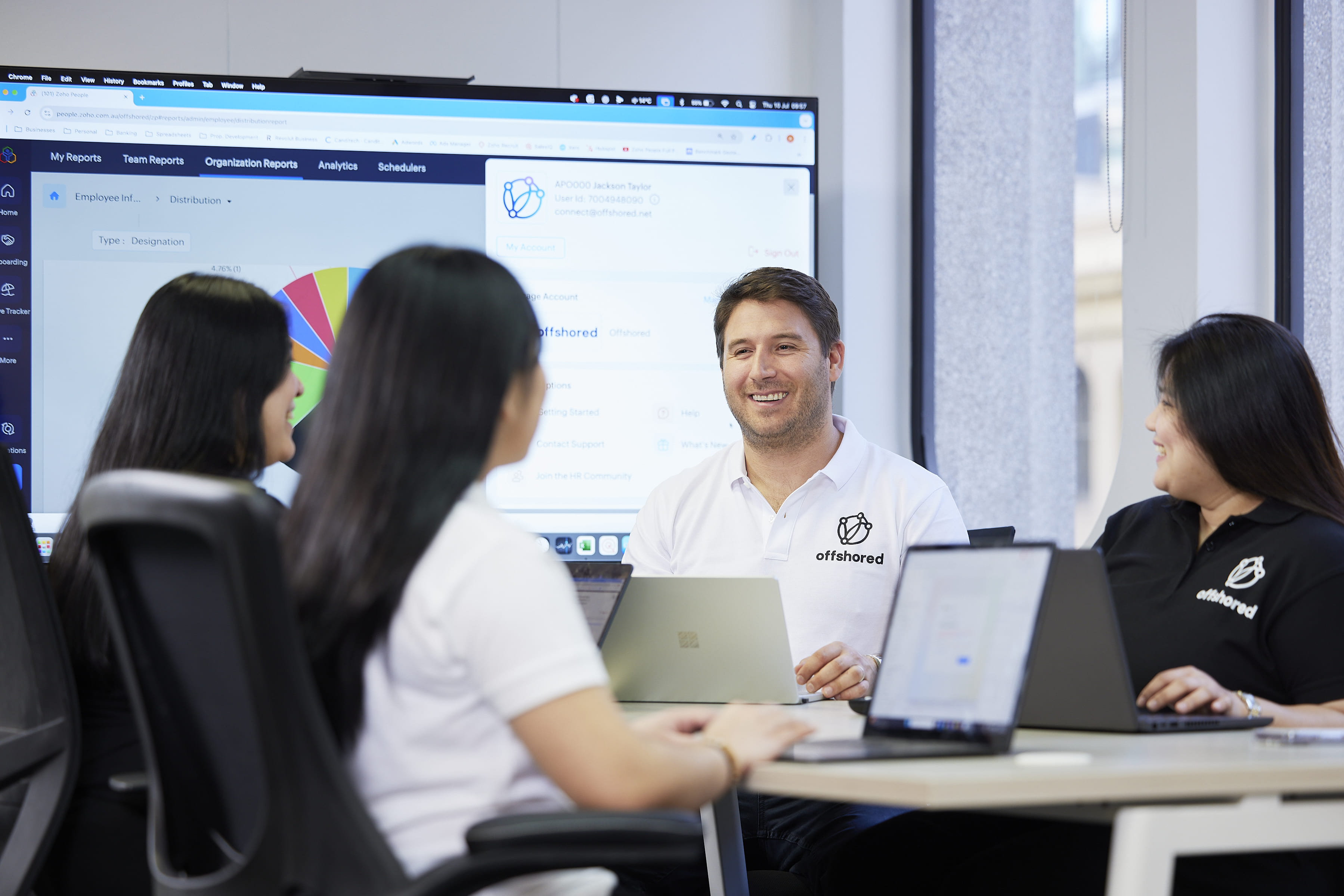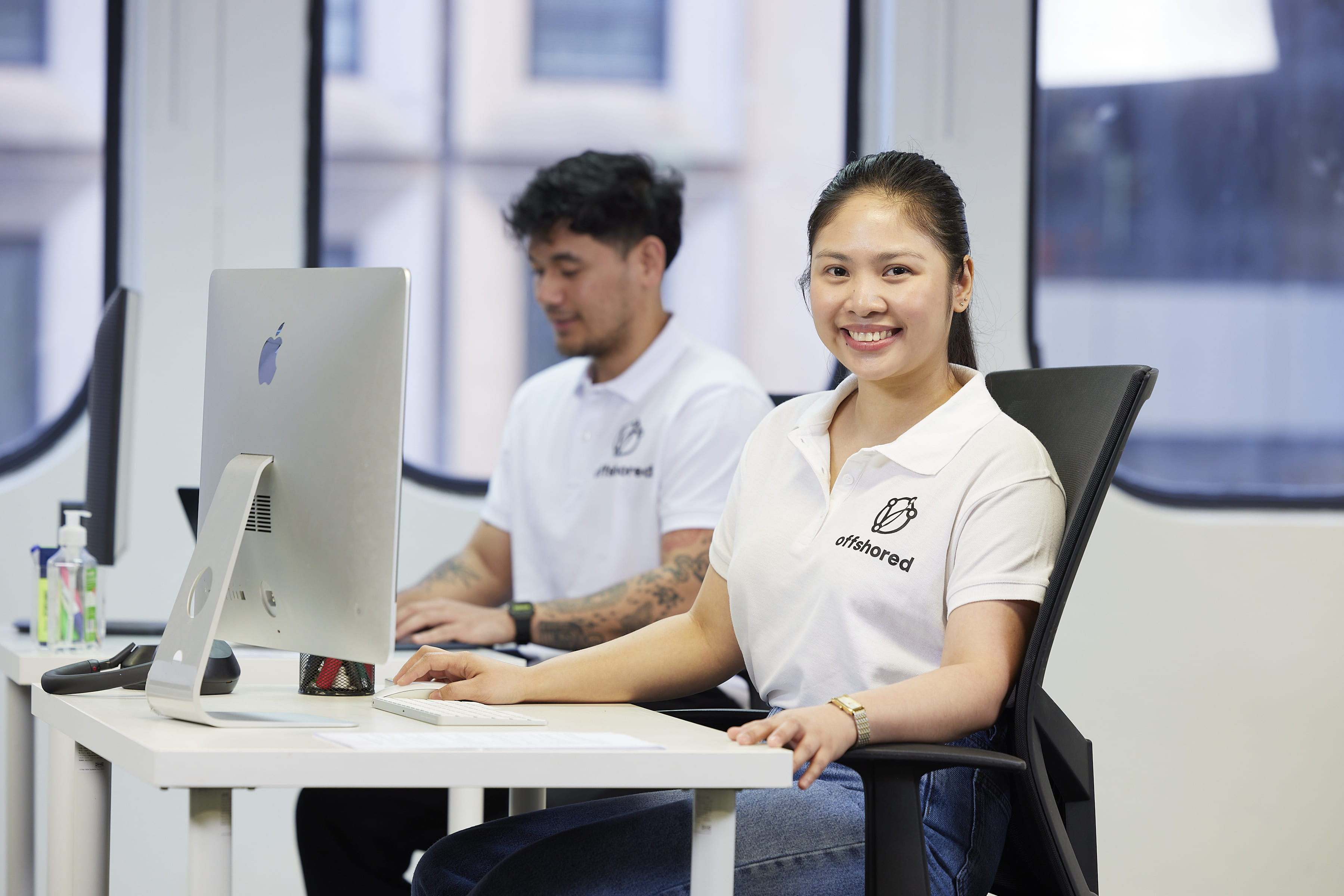Outsource Interior designers to the Philippines with Offshored
Outsourcing interior designers to the Philippines with Offshored is a strategic choice for companies seeking design excellence, operational flexibility, and measurable cost efficiency. Filipino interior designers provide services that span residential, commercial, retail, and healthcare spaces, with specialization in styles such as Scandinavian, urban, Hamptons, minimalist, and French-Provincial aesthetics. Interior planning includes both creative and regulatory dimensions; our offshore teams deliver spatial concepts that adhere to local safety, fire, and construction standards while maximizing end-user functionality.
Offshoring interior design staffing with Offshored ensures project viability through effective budget control, timeline adherence, and skilled client consultation. Our Filipino designers analyze architectural layouts, prepare scope validation documentation, and forecast cost scenarios in collaboration with your onshore project managers. The shared involvement prevents scope creep and ensures that spatial intent, cost margins, and functionality stay prioritised from initial planning to project execution.
When you outsource interior designers to the Philippines using our platform, you access a talent pool with formal qualifications spanning diplomas, bachelor's, and master's degrees in interior design, along with professional exposure across shops, showrooms, clinics, and commercial towers. Each team member undergoes rigorous assessment and onboarding under our staffing protocols, ensuring only top-tier candidates join your workflow.
Hire offshore Interior designers for Australian Architectural firms with Offshored
Hiring offshore interior designers for Australian architectural firms with Offshored enables cost-efficient access to skilled professionals specialized in diverse spatial design applications. Our Filipino-based talent pool brings advanced technical knowledge across commercial, hospitality, healthcare, residential, and workplace design disciplines, supporting both concept ideation and execution.
Offshore interior designers from the Philippines deliver comprehensive project support including 3D rendering, FF&E (furniture, fixtures, and equipment) selection, and bulk procurement coordination. Using tools such as AutoCAD, Revit, 3ds Max, SketchUp, Adobe Creative Suite, and Lumion, our team visualizes and documents design solutions that align with brand identity and regulatory compliance.

What are the benefits of outsourcing an Interior designer to the Philippines?
The main benefits of outsourcing an interior designer to the philippines are listed below:
- Cost-Effective Design Talent: Access globally competitive Filipino designers at up to 70% lower cost than hiring locally. Typical monthly rates for clients range from $1,800 to $2,500 AUD per team member, depending on skill level and specialisation.
- Internationally Trained Professionals: Designers hold degrees in Interior Design or Architecture, with certifications (e.g., PIID) and proficiency in tools like SketchUp, AutoCAD, and Lumion.
- Cultural Adaptability: High cultural fluency allows interpretation of global styles—Scandinavian, Hamptons, or Australian—supported by a service-driven, flexible work ethic.
- Fluent English Communication: English proficiency ensures clear briefings, presentations, and revisions, reducing miscommunication across time zones.
Global-Standard Output: Deliverables include mood boards, FF&E specs, CAD drawings, and 3D walkthroughs, produced with precision and aligned with ISO 9001 standards. - Flexible and Scalable Engagement: Choose from part-time, full-time, or project-based models with no setup fees or lock-in contracts, ideal for scaling design capacity efficiently.
- Remote Design & Procurement: Teams handle material sourcing and provide photorealistic 3D previews, speeding up approvals and minimizing revisions.
Robust Outsourcing Infrastructure: Backed by strong BPO support, government incentives, and reliable digital infrastructure, the Philippines is a top destination for design outsourcing.

What Do Interior Designers Do?
Interior designers plan, design, and furnish interior environments to optimize functionality, safety, and aesthetics. Interior designers evaluate spatial requirements, user behavior, and environmental factors to develop comprehensive design strategies for residential, commercial, hospitality, and institutional settings. Interior designers assess the purpose of each space by conducting user interviews, analyzing traffic flow, and identifying accessibility needs to ensure the interior layout supports both human interaction and operational efficiency.
Design consultants develop conceptual design plans using hand sketches, CAD software, and 3D visualization tools to communicate spatial arrangements and material selections. Spatial planning experts select materials, textures, color palettes, lighting schemes, and furnishings based on durability, regulatory compliance, and the desired emotional impact of the space. Interior planning professionals designers detailed documentation, including floor plans, elevations, and specifications, to guide construction and procurement processes with precision.

What are the main duties of an Interior Designer?
The main duties of an Interior Designer define the core responsibilities required to deliver functional, safe, and visually appealing interior environments across residential, commercial, and institutional projects.
Design Concept Development
Translates client needs, spatial limits, and style preferences into mood boards, sketches, and 3D visuals integrating layout, lighting, and materials to set spatial tone.
Space Planning & Layouts
Produces optimized floor plans and zoning schemes using CAD/BIM tools, ensuring ergonomic flow and compliance with building codes.
Material & Furnishing Specification
Selects finishes, fixtures, and furniture based on performance, durability, aesthetics, and technical criteria like fire rating and acoustics, aligned with budget and timeline.
Technical Collaboration
Works with architects, contractors, and consultants (e.g., MEP, lighting) to align design intent with structural and mechanical systems through drawings, site visits, and coordination.
Budget & Timeline Management
Oversees cost control and scheduling via estimates, procurement tracking, vendor negotiation, and tools like Gantt charts to ensure timely, on-budget delivery.
Creative-Technical Integration
Combines aesthetic vision with technical precision, compliance, and project oversight to deliver functional, cohesive interior environments.
How much does it cost to hire offshore Interior Designers to the Philippines?
Hiring offshore Interior Designers to the Philippines reduces labor costs by 70% compared to hiring designers in Australia. Offshore interior design outsourcing leverages the Philippines’ lower living expenses and operational costs to deliver affordable full-time, part-time, or project-based design services. Entry-level Filipino interior designers earn between, mid-level designers with several years of experience earn between AUD 1600 and AUD 2,250, and senior designers with advanced expertise command between AUD 2,250 and AUD 4,500 monthly.

Why choose the Philippines for hiring Interior Designers?
Choosing the Philippines for hiring interior designers provides access to globally competent professionals trained in advanced design software, fluent in English, and aligned with international aesthetics. Filipino interior designers possess technical proficiency in CAD tools such as AutoCAD, Revit, and SketchUp, enabling them to deliver precise 2D layouts, 3D renderings, and BIM documentation for residential, commercial, and hospitality projects. Design professionals in the Philippines hold degrees in Interior Design or Architecture and are certified by institutions like the Philippine Institute of Interior Designers (PIID), ensuring compliance with global standards and local building codes.

Why Choose Offshored.net to Hire Interior Designers from the Philippines?
Outsource interior designers to the Philippines with Offshored to access expert creative professionals trained in diverse commercial and residential environments. We deploy Filipino interior designers who are skilled in software such as AutoCAD, Revit, SketchUp, Adobe Photoshop, and 3ds Max, enabling them to deliver high-fidelity 3D interior renderings, space planning, and concept development across various design typologies including minimalist, Scandinavian, luxury, and industrial.
Offshored.net manages the full offshore interior designer recruitment process with a streamlined model built on fixed monthly pricing. Businesses operating in Australia achieve up to 70% cost reduction by removing overheads tied to permanent local staffing, real estate leases, and HR liabilities. Our offshore solutions eliminate the need for in-house hiring while keeping full-time dedication and accountability from remote Filipino personnel.

How to Hire Interior Designers from the Philippines
At Offshored, we streamline the entire employment and onboarding process—delivering skilled, English-fluent professionals who are vetted, tested, and ready to work. Below is how our structured process ensures both quality and clarity:
1. Define Project Scope (Client-Led / joint)
The client defines the role or project scope, including:
- Design style, space type (residential/commercial/hospitality)
- Budget, timeline, and expected deliverables (e.g., 2D plans, 3D renderings, material selections, mood boards)
This clarity ensures accurate role matching from the outset.
2. Smart Resume Filtering (Offshored-Led)
We use custom-built software to scan and filter thousands of applications based on skills, experience, qualifications, and role relevance—automatically shortlisting top matches.
3. Smart Resume Filtering (Offshored-Led)
We conduct tailored, role-specific skill assessments and video interviews using an advanced testing platform. This allows us to:
- Validate technical skills through written and live scenario tasks
- Assess English fluency, critical thinking, and project comprehension
All test results and interview recordings are shared with the client to support final review.
4. Client-Led Skill-Based Interview (Optional)
Clients can choose to conduct a final interview focusing on:
- Similar project experience and design interpretation
- Code familiarity (e.g., Australian NCC)
Communication and collaborative approach
5. Credential & Portfolio Verification (Offshored-Led)
We verify:
- Degrees from CHED-accredited institutions
- Certifications (e.g., PRC, NCIDQ, LEED AP)
- Portfolios (3–5 projects) showcasing technical drawings, visual outputs, and client feedback
- References for reliability, communication, and deadline adherence
6. Contract Finalisation (Joint)
We assist clients in finalising:
- Scope of work, milestones, payment terms (hourly, fixed, or retainer)
- Revision limits, IP ownership, and NDAs
- Communication protocols (e.g., Slack, Trello, Asana) with reporting structures and escalation paths
7. Structured, Cost-Effective Hiring (Offshored Guarantee)
Our process ensures you get skilled, globally capable professionals at competitive offshore rates—with full transparency, verified skills, and ongoing support.

More Architectural & Engineering Job Roles Available for Offshoring
to the Philippines
FAQs
Have Any Questions?








.svg)
